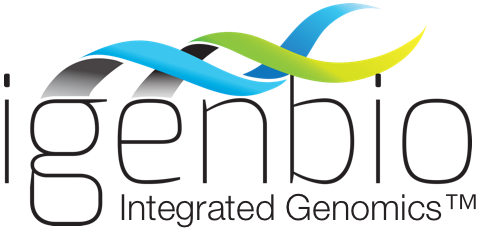Integrated Genomics and BASF Collaborate to Decipher the Genome and Metabolism of Corynebacterium glutamicum
/CHICAGO, IL and Ludwigshafen, Germany - March 2, 2001
Chicago-based Integrated Genomics, Inc. and the transnational chemical company BASF Group entered into a partnership to sequence and annotate the genome of Corynebacterium glutamicum, containing more than three million DNA base pairs. With the aid of the ERGO™ bioinformatics suite, genes and functions were put into a metabolic network to give a map of how the organism converts sugar to lysine. "Now we know who the enzymatic actors are and how they interact with each other," reported Markus Pompejus, Project Manager of Lysine Research at BASF.
Corynebacterium glutamicum converts sugar into the amino acid lysine in a process called fermentation. Despite the bacterium's industrial importance in lysine production, much of the set of steps the organism uses to produce this amino acid was unknown prior to this project. Analysis of this organism's genome enabled the partners to identify all of the genes responsible for the reactions used by C. glutamicum for lysine synthesis. "The function for the approximately 1500 never-before identified genes was determined and patent applications were filed", Pompejus elaborated.
Industry leaders see the biotechnological production of lysine by fermentation as an inexpensive means to provide a plentiful source of this amino acid. In 2000, approximately 450,000 tons of this amino acid were sold, giving a global market value of over 660 million EURO.
"We are very pleased with our fruitful partnership with BASF," added Michael Fonstein, CEO of Integrated Genomics, Inc., the company that created the ERGO™ bioinformatics suite. "The extensive number of genomes and the diversity of organisms in the ERGO database are essential factors for discovering and patenting new genes and for understanding how genes work with each other to produce a product such as lysine," explained Fonstein. ERGO™ currently holds sequence information from more than 290 genomes from the bacterial, archaeal, and eukaryotic branches of the tree of life, a biological classification showing that all life shares a common ancestor. Through parallel analysis of organisms from these different branches of life, genetic patterns from some species provide useful inferences to identify new genes and functions for other species, providing a more robust understanding of the patterns and behavior of life.
About Integrated Genomics
Integrated Genomics (IG) is a private company located in Chicago, Illinois with subsidiaries in Jena, Germany and Moscow, Russia. The company provides full genomic services including high throughput DNA sequencing, assembly, annotation, and metabolic reconstruction for industrial and academic clients. IG's bioinformatic suite ERGO™, based on WIT-PRO, has a curated database of over 600,000 ORFs from more than 300 genomes and a database of more than 3,500 biochemical pathways, allowing the company to produce wiring diagrams for cellular functionality. The new gene assignments permitted by using the ERGO™ bioinformatic suite are tested in a biochemical lab, leading to the identification of potential targets for new antibiotics or for strain engineering for improved industrial fermentation. The recent addition of a large number of new sequenators allows the company to expand its repertoire to include eukaryotic organisms.
This release may contain forward-looking statements that are subject to certain risks and uncertainties, including statements regarding the Company's plans to increase its customer base, enhance its technologies, and intensify its internal product development programs. Such statements are based on management's current expectations and are subject to a number of factors and uncertainties that could cause actual results to differ materially from those described in the forward-looking statements. The Company cautions investors that there can be no assurance that actual results or business conditions will not differ materially from those projected or suggested in such forward-looking statements as a result of various factors, including, but not limited to, the following: the Company's early stage of development, technological uncertainty and product development risks, uncertainty of additional funding, reliance on research collaborations, competition, the Company's ability to protect its patents and proprietary rights and uncertainties relating to commercialization rights.
Contact:
Yuri Nikolski, Ph.D.
Vice President, Business Development
Integrated Genomics
yuri@IntegratedGenomics.com


